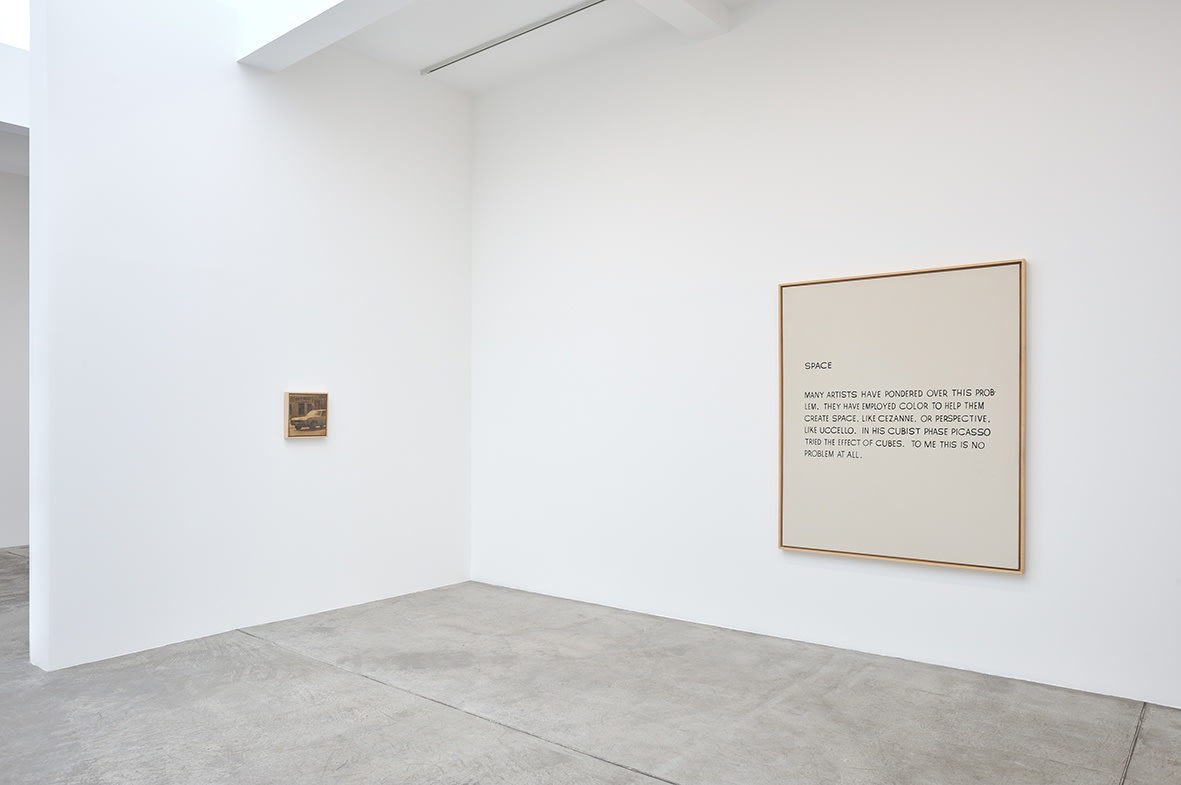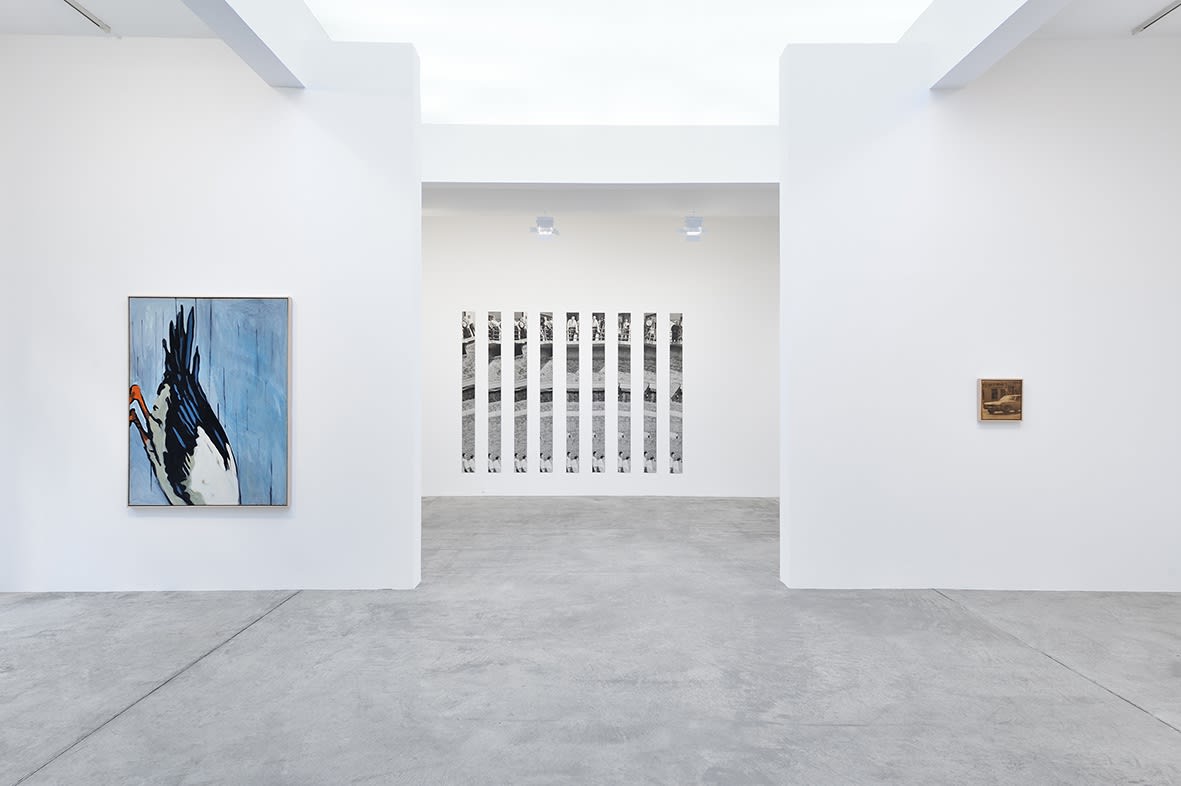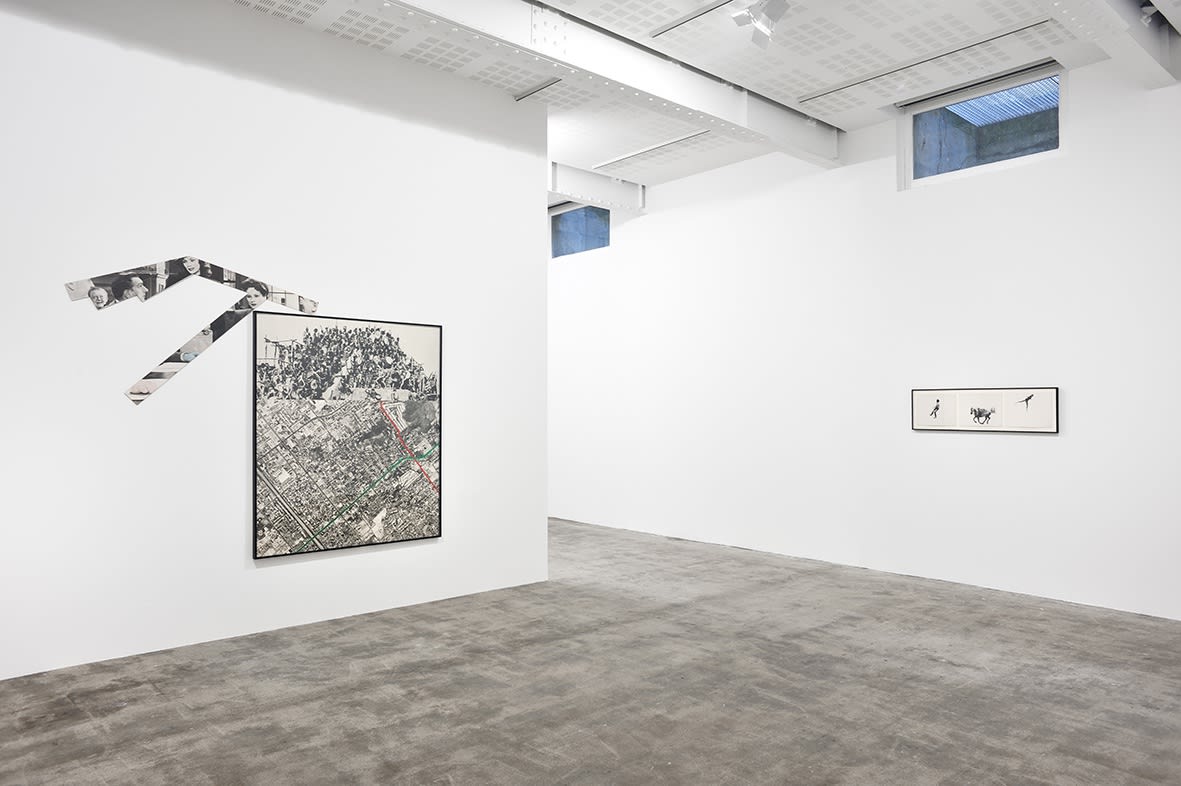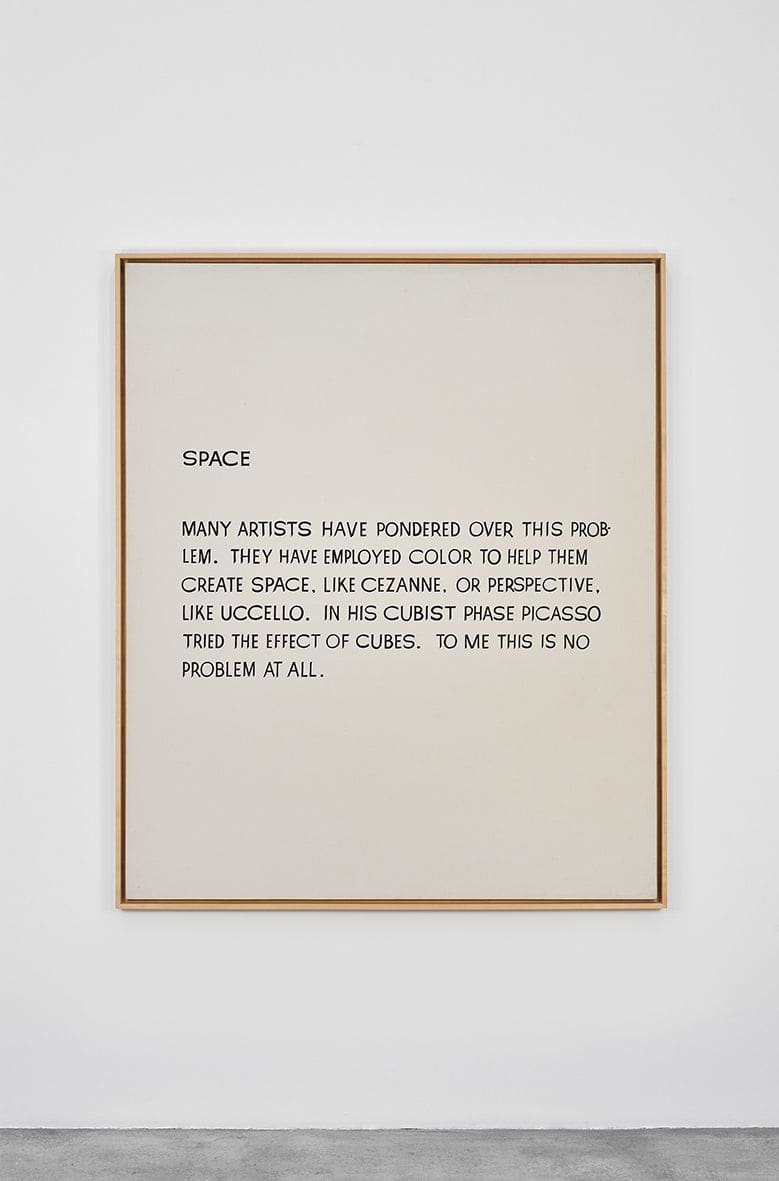Overview
Marian Goodman Gallery, London and Galerie Marian Goodman, Paris are pleased to present two simultaneous exhibitions by John Baldessari. Pictures & Scripts, at the London gallery will present a series of new works, the artists first solo exhibition in London since his retrospective Pure Beauty at Tate Modern in 2009. Concurrently at Galerie Marian Goodman, Paris, Early Work will show for the first time a refined selection of important early works from Baldessari’s practice.
John Baldessari: Pictures & Scripts | Marian Goodman Gallery, London
28 February – 25 April 2015
Opening Reception: Friday 27 February 5:30-7;30 pm
John Baldessari: Early Work | Galerie Marian Goodman, Paris
28 February – 11 April 2015
Opening Reception: Saturday 28 February 6-8 pm
Marian Goodman Gallery, London and Galerie Marian Goodman, Paris are pleased to present two simultaneous exhibitions by John Baldessari. Pictures & Scripts, at the London gallery will present a series of new works, the artists first solo exhibition in London since his retrospective Pure Beauty at Tate Modern in 2009. Concurrently at Galerie Marian Goodman, Paris, Early Work will show for the first time a refined selection of important early works from Baldessari’s practice.
Pictures & Scripts is a series of 20 new paintings that juxtapose still images appropriated from black and white films with excerpts from fictive narrative film scripts. Removed from their original contexts, these appropriated film stills capture moments of paused action, within which selected forms have been discretely over-painted in monochrome fields. The excerpts of dialogue between unknown characters hint at conversations between art world insiders, humorously denuding the commercial arm of the art industry.
The lineage of these diptychs can be traced back to Baldessari’s early experiments with text and image in the mid-1960s, wherein empty canvases were painted with statements derived from contemporary art theory, one of which, Space, 1966-68, will be presented in the Paris exhibition.
The film images in Pictures & Scripts are cropped to heighten their ambiguity, deliberately isolating iconic film roles like cowboys, gangsters and ingénues, displaced from their original dramatic context and animated with new narratives for the viewer to construct. Each painting is a diptych composed of an image and text element, the text half of each painting similarly presents a glimpse of a larger dialogue, seemingly lifted from its original context. Language and image are presented on equal ground without hierarchy, so that the essence of the work is in the intersection of the two. The arrangement of words and images has been a defining interest of Baldessari’s since the 1960s when he stated “a word could be an image or an image could be a word, they could be interchangeable’’.
Initially trained as a painter, Baldessari began experimenting with text and photography and incorporating them into his work in the mid-1960s, evolving his practice through the 1970s into printmaking, film, sculpture and installation. Baldessari has developed a body of work that demonstrates and discloses the narrative potential of images and their associative power with text and language of which the foundations can be found in a selection of key pieces in Early Work.
Early Work at the Paris gallery comprises examples from most of Baldessari’s major series; National City, Commissioned Painting, Thaumatrope, Vanitas, Portrait and Goya series, each giving a unique overview of the breadth and development of his practice. Some of the work on display, including Study for Econ-O-Wash (Version B), 1967 have rarely been exhibited since their creation.
Bird #1, 1962, the earliest work in the exhibition, presents an image of a bird falling through the picture plane. Again, an early example of Baldessari’s use of cropping for dramatic effect, the bird has been cut in such a cinematic way as to suggest its falling through the air. Bird #1 belongs to a small group of paintings that escaped destruction, when on July 24 1970 Baldessari decided to ceremoniously cremate 125 works, including many oil paintings, made between 1953 and 1966.
Following Baldessari’s seminal statement “I will not make any more boring Art”, he conceived the work The Artist Hitting Various Objects with a Golf Club, 1972-73, composed of 30 photographs of the artist swinging and hitting with a golf club objects excavated from a dump, as a parody of cataloging rather than a thorough straight classification.
Portrait: Various Identities Hidden With Name/Date Cards, 1974 echoes the work Portrait: Artist’s Identity Hidden with Various Hats, 1974, a work in the collection of LACMA, Los Angeles, which illustrates the recurrence of portraits with faces obscured by domestic objects or spots of varying colours. For Baldessari, faces dominate our interaction and communication and “If art is a mystery, then the face is a betrayer and should be hidden”.
Art historical references appear throughout John Baldessari’s practice, as evidenced by the work in the exhibition from the Goya Series; Goya Series: THIS, THAT, OR THE OTHER, 1997 in which we see black and white images of everyday objects; a paper clip, bouquet of flowers, and apple, juxtaposed with titles taken from The Disasters of War, the 82 prints created between 1810 – 1820 by Francisco Goya.
John Baldessari was born in 1931 in National City, California; he lives and works in Santa Monica, California. His work was included in the 47th Venice Biennale (1997) and 53rd Venice Biennale (2009) where he won the Golden Lion Award for Lifetime Achievement, the Carnegie International (1985-86), the Whitney Biennial (1983), as well as the Documenta V (1972) and VII (1982). In 2005, an extensive, two-part retrospective was dedicated to the artist at the Museum Moderner Kunst Stiftung Ludwig, Vienna and at the Kunsthaus Graz, Graz. Recently the artist has presented his works in solo exhibitions at the Fondazione Prada, Milan (2010) and at the Stedelijk Museum, Amsterdam (2011). Baldessari’s work was the subject of the major retrospective, Pure Beauty, which retraced his career from 1962 to 2010. Organised by Tate Modern, London, the exhibition travelled to MACBA, Barcelona; LACMA, Los Angeles, and the Metropolitan Museum of Art, New York from 2010-2011.
John Baldessari has been the recipient of many prestigious awards, including the 2012 Kaiserring Award by
the city of Goslar, Germany; in 2008 he received the Biennial Award for Contemporary Art from the Bonnefantenmuseum, Maastricht.
The London gallery is located on Soho’s Golden Square and open to the public Tuesday through Saturday from 10:00am-6:00pm.
For further information please call +44 (0)20 7099 0088 or email martin@mariangoodman.com
Galerie Marian Goodman, Paris is located 79 rue du Temple, 75003 and open to the public Tuesday through Saturday from 11:00am-7:00pm.
For further information please call +33 (0) 1 48 04 70 52 or email raphaele@mariangoodman.com






























